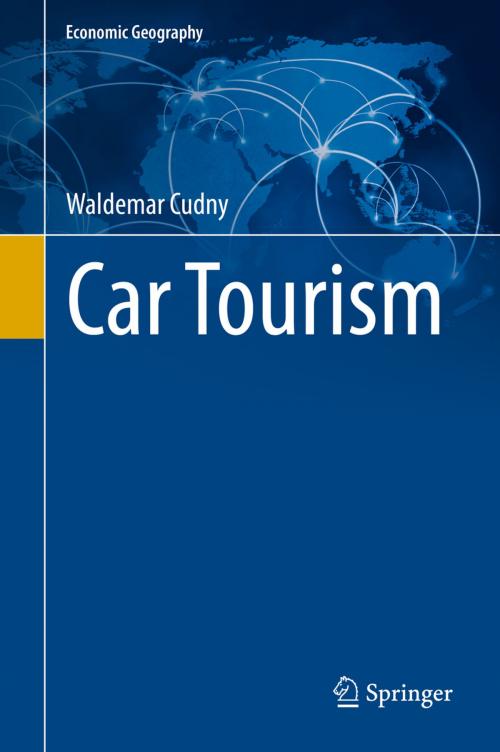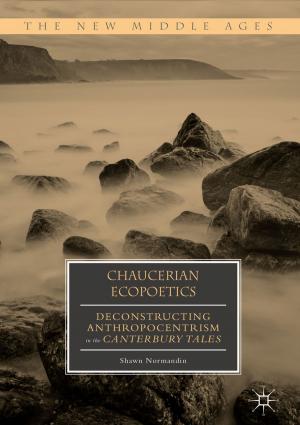Car Tourism
Business & Finance, Industries & Professions, Hospitality, Tourism & Travel, Nonfiction, Science & Nature, Science, Earth Sciences, Geography| Author: | Waldemar Cudny | ISBN: | 9783319620848 |
| Publisher: | Springer International Publishing | Publication: | July 5, 2017 |
| Imprint: | Springer | Language: | English |
| Author: | Waldemar Cudny |
| ISBN: | 9783319620848 |
| Publisher: | Springer International Publishing |
| Publication: | July 5, 2017 |
| Imprint: | Springer |
| Language: | English |
This book examines the role of cars and the space connected with their production and presentation in tourism development. It describes the role played by experiences and experience societies formed in the 20th c. in the development of contemporary tourism, including tourism related to cars. The book explores the influence of experiencing unusual events, such as car races, car fairs, visits to car industry museums or multifunctional spaces connected with producing and exhibiting cars (e.g. Autostadt or Audi Forum) on the development of a new type of tourism, i.e. car tourism. This kind of tourism is novel in two ways: firstly, it is a new phenomenon in science, as so far it has not been thoroughly studied or described, apart from various short articles. Secondly, this type of tourism has developed on a large scale only in recent years, mainly due to the huge investments made by powerful European car manufacturers (e.g. Autostadt, Audi Forums, Porsche Museum, Lamborghini Museum etc.).
The book presents cars and the spaces related to them as tourist assets (sites, events) and as tourist products that satisfy tourists’ needs. Moreover, it connects the issue of car tourism to the marketing strategies of large car manufacturers and discusses the theory of tourism space, highlighting the main tourism spaces in which car tourism develops. It presents multifunctional spaces (factories, adventure centres – Autostadt in Wolfsburg), museums, car exhibitions, and race tracks. In the next chapter, following an introduction to the problem of events, the author describes events related to car tourism, including races, rallies, driving schools and car fairs. The book ends with a summarizing chapter, which includes a model of the function of car tourism as a separate type of tourism, as well as a discussion presenting the main features, advantages and disadvantages of car tourism in the context of the tourism space theory.
This book examines the role of cars and the space connected with their production and presentation in tourism development. It describes the role played by experiences and experience societies formed in the 20th c. in the development of contemporary tourism, including tourism related to cars. The book explores the influence of experiencing unusual events, such as car races, car fairs, visits to car industry museums or multifunctional spaces connected with producing and exhibiting cars (e.g. Autostadt or Audi Forum) on the development of a new type of tourism, i.e. car tourism. This kind of tourism is novel in two ways: firstly, it is a new phenomenon in science, as so far it has not been thoroughly studied or described, apart from various short articles. Secondly, this type of tourism has developed on a large scale only in recent years, mainly due to the huge investments made by powerful European car manufacturers (e.g. Autostadt, Audi Forums, Porsche Museum, Lamborghini Museum etc.).
The book presents cars and the spaces related to them as tourist assets (sites, events) and as tourist products that satisfy tourists’ needs. Moreover, it connects the issue of car tourism to the marketing strategies of large car manufacturers and discusses the theory of tourism space, highlighting the main tourism spaces in which car tourism develops. It presents multifunctional spaces (factories, adventure centres – Autostadt in Wolfsburg), museums, car exhibitions, and race tracks. In the next chapter, following an introduction to the problem of events, the author describes events related to car tourism, including races, rallies, driving schools and car fairs. The book ends with a summarizing chapter, which includes a model of the function of car tourism as a separate type of tourism, as well as a discussion presenting the main features, advantages and disadvantages of car tourism in the context of the tourism space theory.















